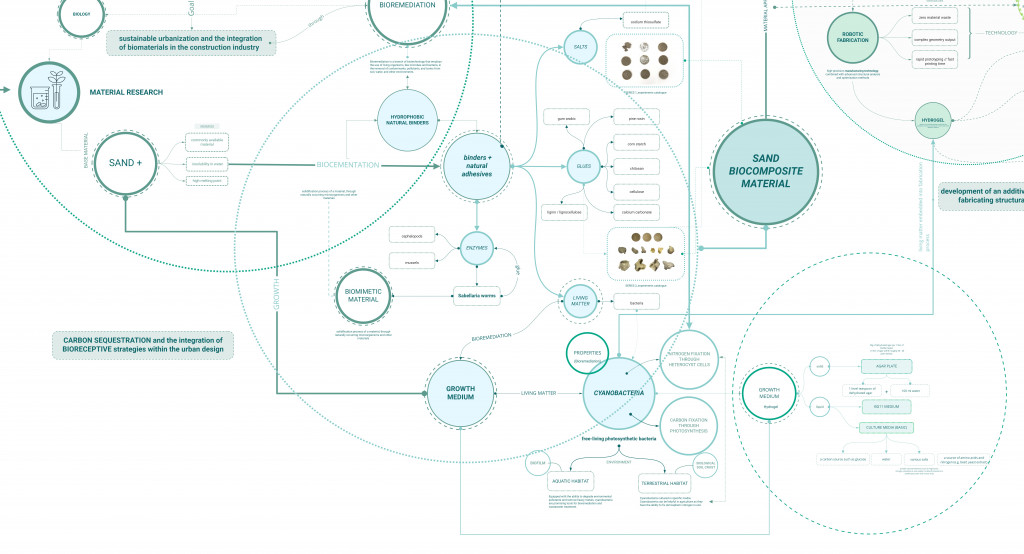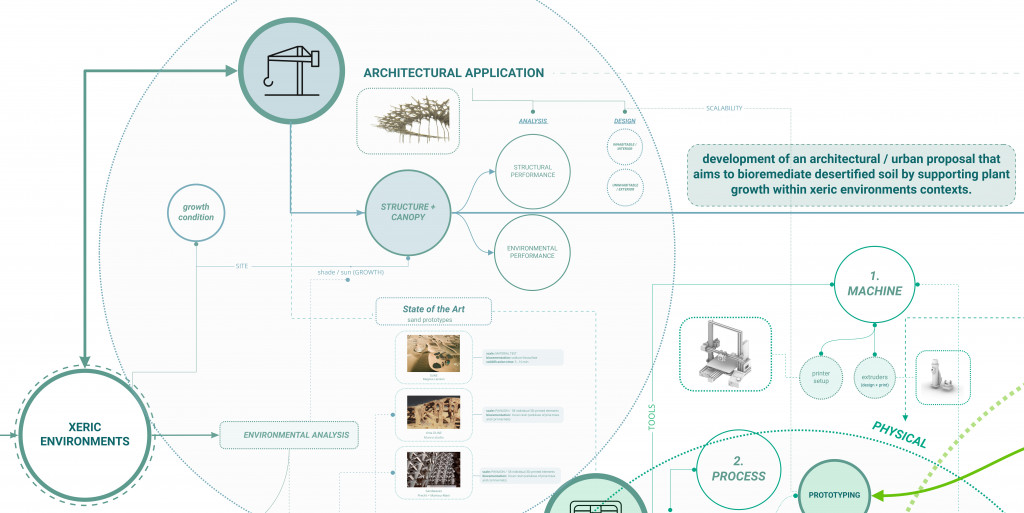RESEARCH & METHODS // COSMOGRAMME WORKSHOP
C-BIOM.A GROUP COSMOGRAMME
The group cosmogramme focuses on explaining the workflow and research interest of the C – BIOM.A thesis studio, by defining the main topics and research categories currently being developed.
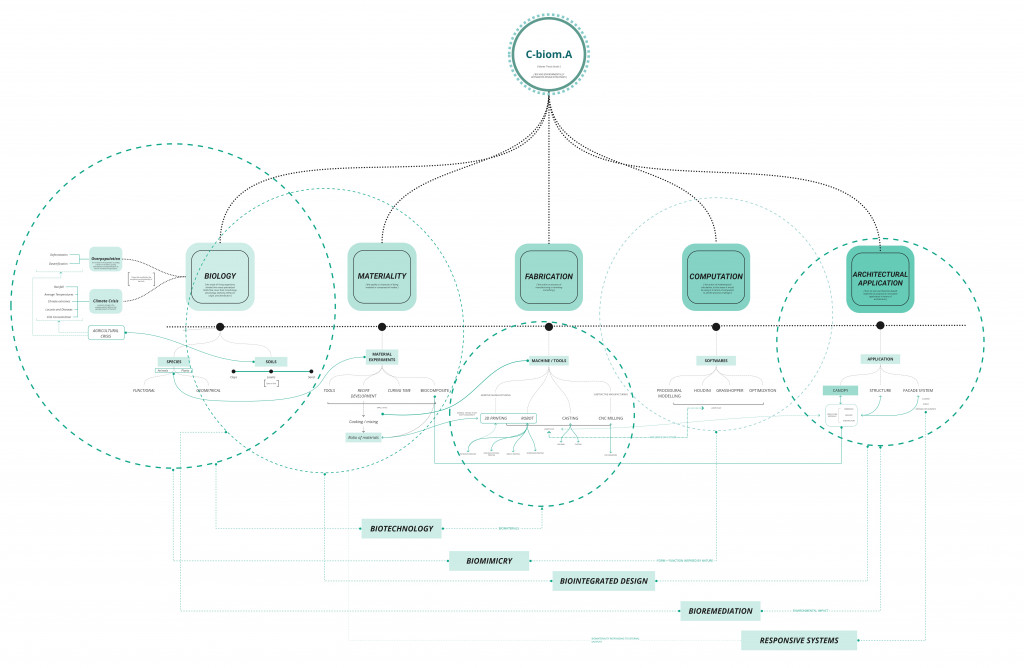
C-BIOM.A INDIVIDUAL COSMOGRAMME
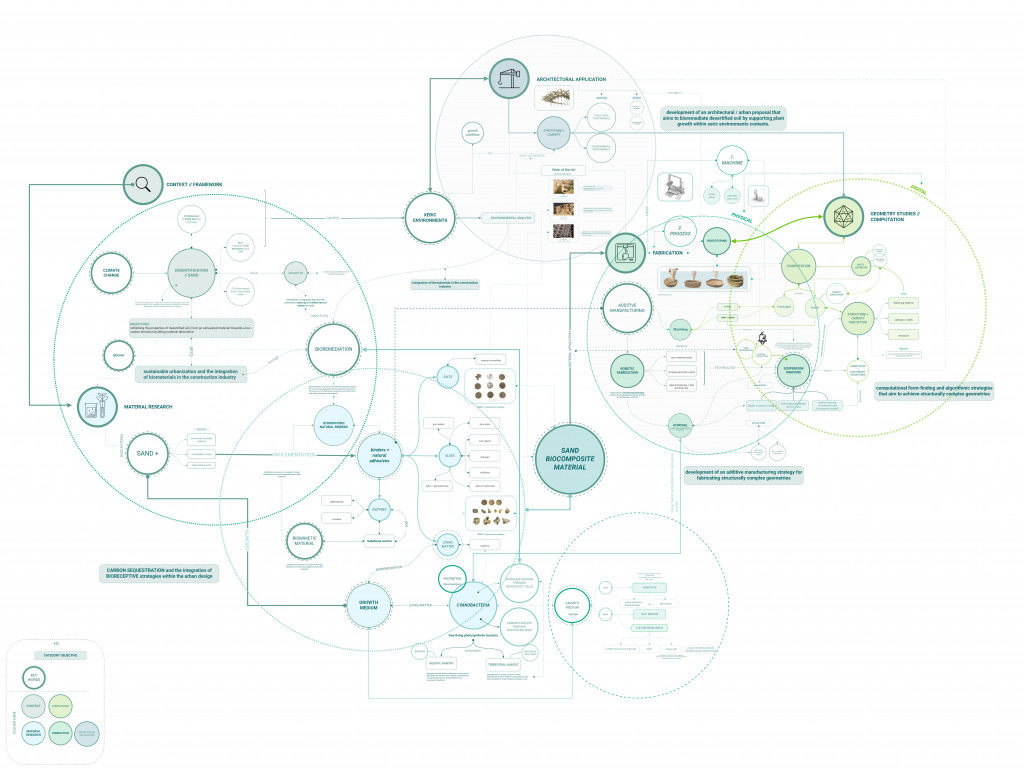
// RESEARCH TOPIC
When the soil is damaged, it loses its capacity to store carbon, releasing it back into the atmosphere.
The permanent decline in the quality of soil, vegetation and water resources are contributing factors in causing the deterioration of the economic productivity of the land and disrupting the ecosystem and the micro and macro climates. This thesis explores the potential of bioremediation, by rethinking the properties of desertified soil, from an exhausted material towards a zero-emission building material alternative.
// CONTEXT / FRAMEWORK
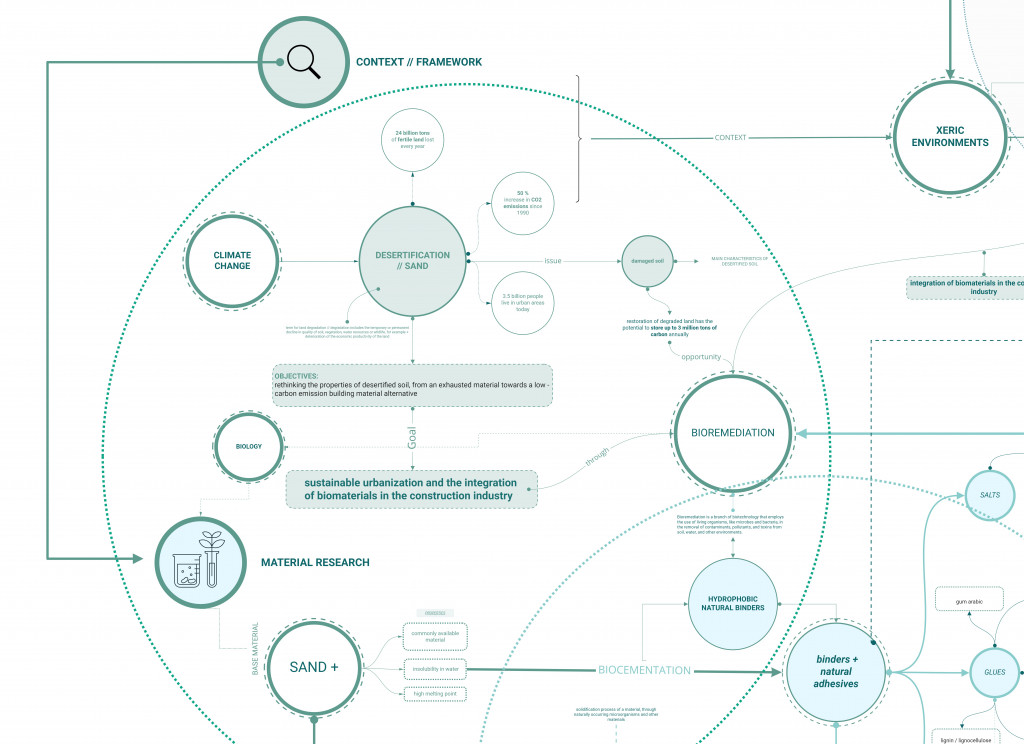
// MATERIAL RESEARCH
The process involves developing a biomaterial derived from sand, composed of natural binders that are hydrophobic, durable, and embedded with growth medium for plants specific to xeric environments. The main objectives consist of conducting a series of material experiments that investigate possible compositions of natural binders through which it is possible to achieve sand biocementation, as well as creating a catalogue of the results.
// FABRICATION
Driven by computational form-finding and algorithmic strategies, the proposal aims to achieve structurally complex geometries fabricated through robotic suspension printing techniques, that challenge the idea of architectural canopies.
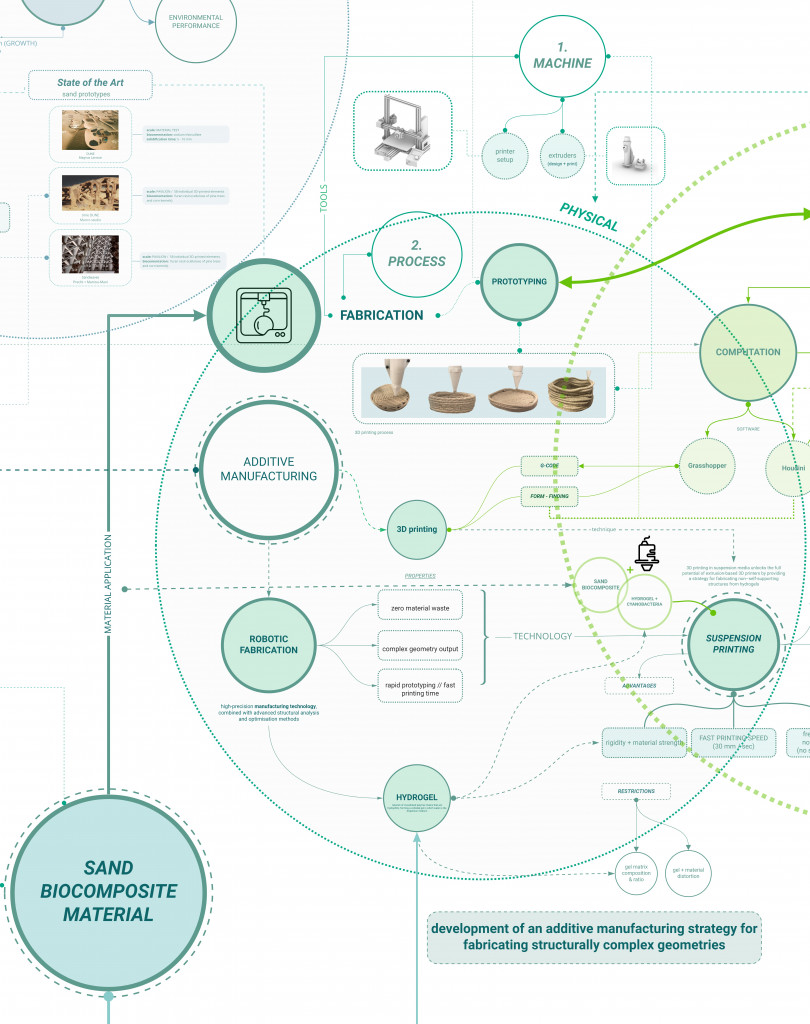
// COMPUTATION / GEOMETRY STUDIES
The process involves a hybrid methodology of working between physical and digital experiments, though computational form-finding and algorithmic strategies that aim to achieve structurally complex geometries.
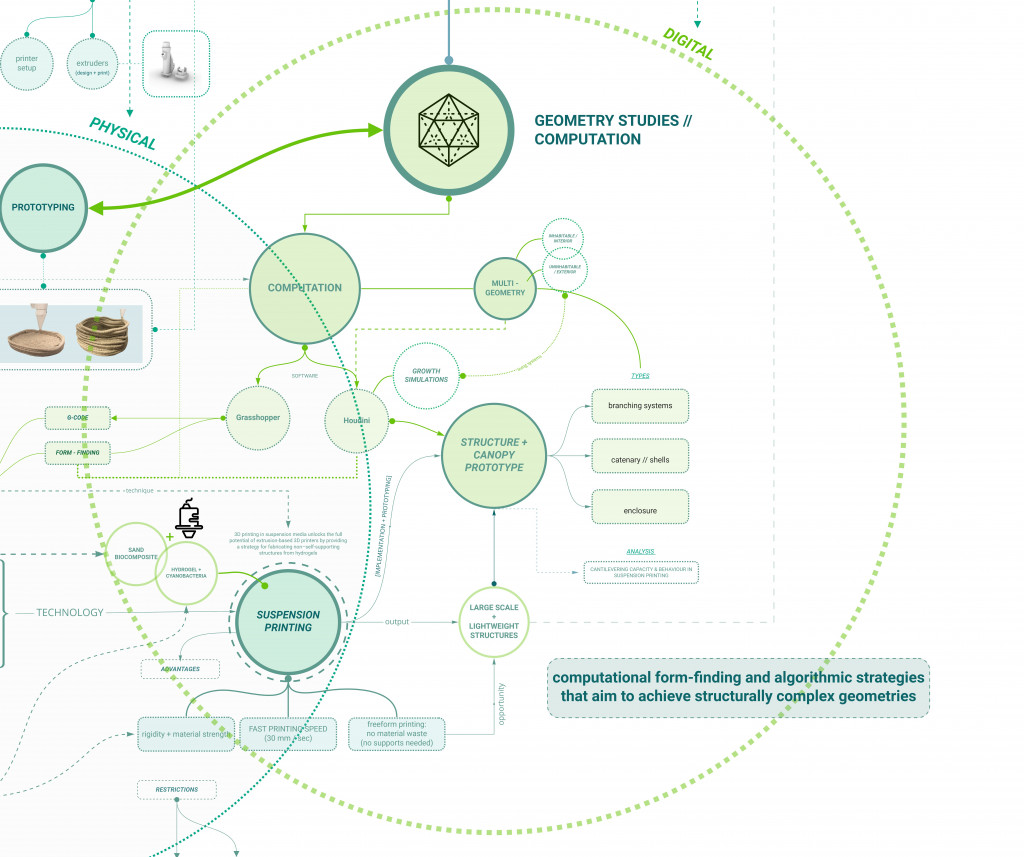
// ARCHITECTURAL APPLICATION
//SAND BIOCOMPOSITE RESEARCH FINAL COSMOGRAMME
Sand Biocomposite_C-BIOM.A // Cosmogramme Workshop is a project of IAAC, Institute for Advanced Architecture of Catalonia developed in the Master in Advanced Architecture (MAA02) 2020/21 by:
Student: Stefana Zapuc
Faculty: Mireia Luzarraga
